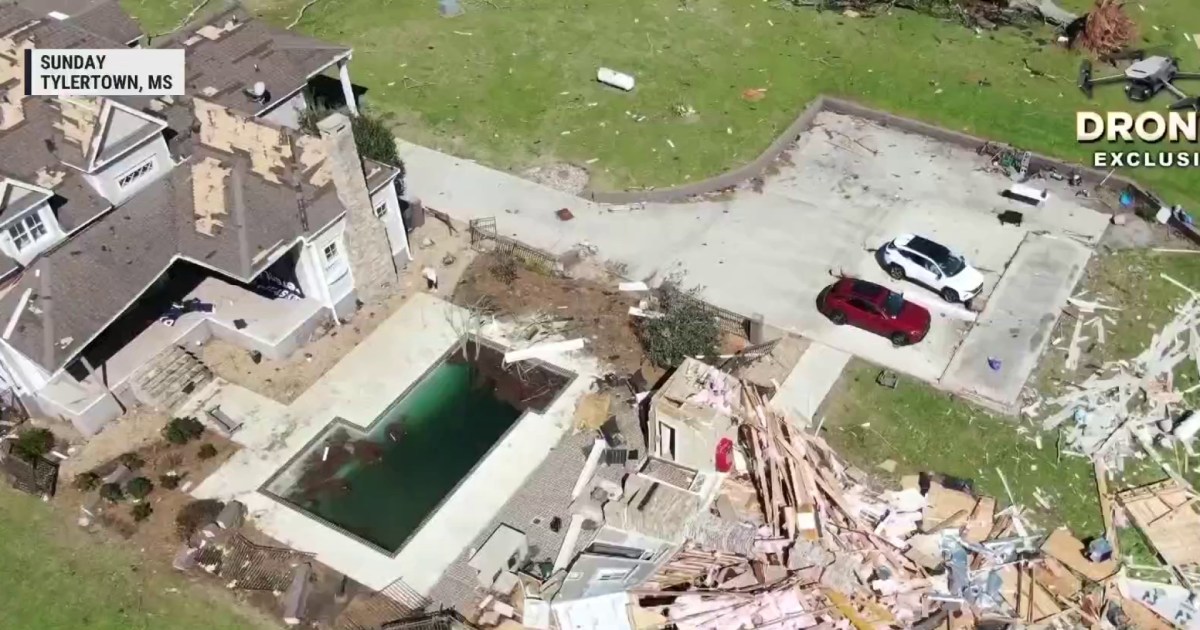Catastrophic Storms Claim Over 40 Lives as Severe Weather Ravages the U.S.
In recent weeks, a series of catastrophic storms have swept across the United States, leaving a trail of destruction and claiming the lives of over 40 individuals. The storms have not only devastated communities but have also raised critical questions about the adequacy of disaster preparedness and response measures. As families mourn their losses and communities assess the extensive damage, the nation must confront the pressing need for improved strategies to handle such severe weather events.
The Impact of the Storms
Reports indicate that the storms have primarily affected regions in the Midwest and Southeast, with tornadoes, heavy rainfall, and flooding wreaking havoc on homes and infrastructure. Entire neighborhoods have been flattened, and many residents have been displaced as emergency services work tirelessly to provide aid.
- Tornadoes: Several tornadoes touched down in states like Arkansas and Mississippi, with winds reaching upwards of 150 mph. These powerful storms obliterated homes and left families scrambling for safety.
- Flooding: Heavy rainfalls led to severe flooding in urban areas, causing rivers to overflow their banks and inundate streets. Emergency services were overwhelmed with rescue operations as stranded residents called for help.
- Power Outages: As a result of the storms, millions experienced power outages. Crews worked around the clock to restore electricity, but many remained without power for days.
The aftermath of these storms underscores the fragility of our infrastructure and the urgent need for enhanced emergency preparedness measures. Families are left grappling with loss and uncertainty, while local governments face the daunting task of rebuilding and restoring their communities.
Lessons Learned: The Need for Improved Disaster Preparedness
As the nation reflects on these catastrophic storms, it is imperative to consider the lessons learned about disaster preparedness. The frequency and intensity of severe weather events have increased in recent years, prompting experts to advocate for a more robust approach to emergency management.
- Enhanced Early Warning Systems: One of the most critical components of disaster preparedness is the ability to warn communities about impending storms. Investing in better technology and communication systems can help ensure that residents receive timely alerts, allowing them to take necessary precautions.
- Community Training Programs: Educating the public on disaster response can significantly improve outcomes during severe weather events. Training programs that teach families how to create emergency plans, prepare disaster kits, and respond to emergencies can save lives.
- Infrastructure Improvements: Many areas affected by the storms have outdated infrastructure that is ill-equipped to handle severe weather. Upgrading roads, bridges, and drainage systems can mitigate flooding and damage in future storms.
Moreover, communities must work together to foster resilience. Local organizations, schools, and businesses can play a vital role in helping to build a culture of preparedness, ensuring that residents are not only informed but also equipped to handle emergencies.
The Role of Government and Emergency Services
The response from government and emergency services has been commendable in many areas, but there is always room for improvement. Federal, state, and local agencies must collaborate effectively to coordinate disaster response efforts. Resources should be allocated efficiently, and training for emergency responders should be continuously updated to reflect the latest best practices.
- Federal Aid: Following the storms, the federal government has pledged support to affected regions. This aid is crucial for recovery, but it highlights the need for a more proactive approach to disaster management.
- Local Coordination: Local governments are often the first responders in disasters. Ensuring that these agencies have the resources and training they need is essential for effective response.
- Public-Private Partnerships: Collaborations between government agencies and private businesses can enhance recovery efforts. For example, utilities can work with local governments to expedite power restoration.
As communities begin to rebuild, it is vital to ensure that lessons learned from these catastrophic storms inform future policies and strategies. Strengthening the social fabric of communities can lead to enhanced resilience, enabling them to better withstand future disasters.
Community Resilience: A Path Forward
In the wake of destruction, stories of heroism and community spirit emerge. Neighbors helping neighbors, volunteers providing aid, and first responders risking their lives to save others showcase the resilience of the American spirit. This resilience is a powerful asset that can be further cultivated through community initiatives.
- Community Workshops: Organizing workshops that focus on emergency preparedness can empower residents. By fostering a sense of agency, communities can enhance their ability to respond effectively to disasters.
- Support Networks: Establishing support networks for those affected by storms can aid in recovery. These networks can provide emotional support, resources, and a sense of belonging during challenging times.
- Engagement with Local Leaders: Encouraging dialogue between residents and local leaders can ensure that community needs are met and that plans for disaster response are inclusive and effective.
Ultimately, the catastrophic storms that have claimed lives and devastated communities also serve as a wake-up call for the nation. There is a collective responsibility to prioritize disaster preparedness, invest in resilience-building measures, and foster a culture of readiness. Through collaboration, education, and community spirit, we can work towards a future where fewer lives are lost to nature’s fury.
Conclusion
The recent catastrophic storms that have claimed over 40 lives are a stark reminder of the power of nature and the vulnerabilities we face. As the nation grapples with loss and destruction, it is vital to reflect on our preparedness for such severe weather events. By learning from these tragedies and taking proactive steps to enhance our disaster response strategies, we can create more resilient communities. Together, we can honor those who have lost their lives by ensuring that we are better prepared for whatever challenges lie ahead.
See more Your Daily Weather



